Offgrid Preparation Venezuela Crisis: Learning from a Nation’s Complete Economic Collapse
In This Article
Imagine an oil-rich democratic nation with a vibrant culture, stunning tropical beaches, and growing population of over 31 million. Its metropolitan capital city is perched at the foot of a towering mountain range, and features a contrast of historic stone architecture and glistening modern skyscrapers. Much like the United States, it is structured as a republic, governed by a constitution, and led by a president who was elected by the citizens.
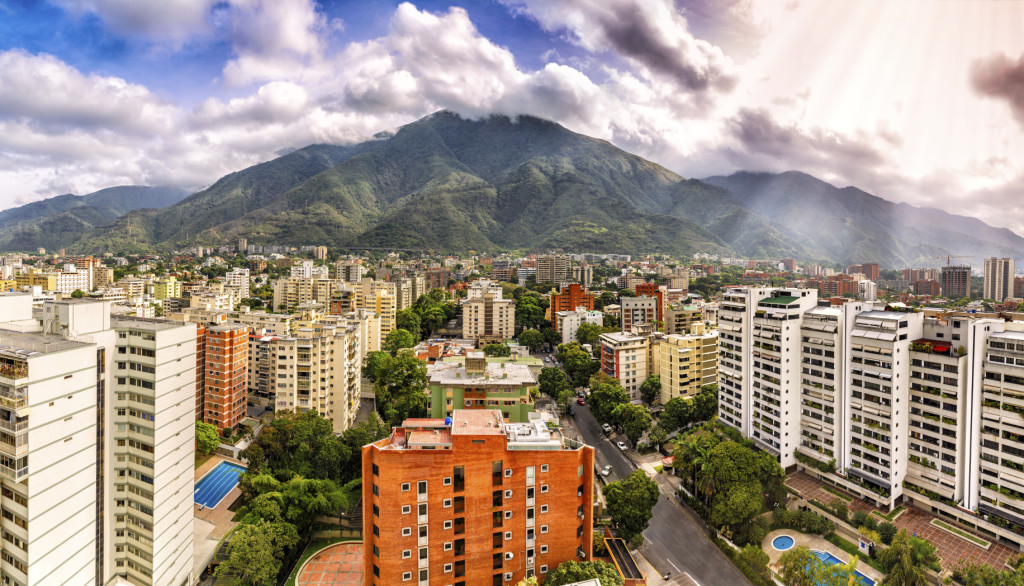
Caracas, the capital of Venezuela, is located along a coastal mountain range and close to the Carribean Sea. Source:...
This may sound like a wonderful place to call home, and there was once a time when that was certainly the case. However, it is now a nation that has descended into a state of utter chaos, with rioting in the streets, widespread food shortages, skyrocketing inflation, and a mass exodus of refugees.
It might seem like something out of the pages of a post-apocalyptic novel, but if you've been following world news lately, you'll no doubt recognize that this is a very real scenario. The name of this country is Venezuela, and its recent circumstances provide a harrowing example of nation-wide economic collapse. As preparedness-minded individuals, we must understand the facts of these tragic events, learn from them, and apply these lessons to our own survival plans.
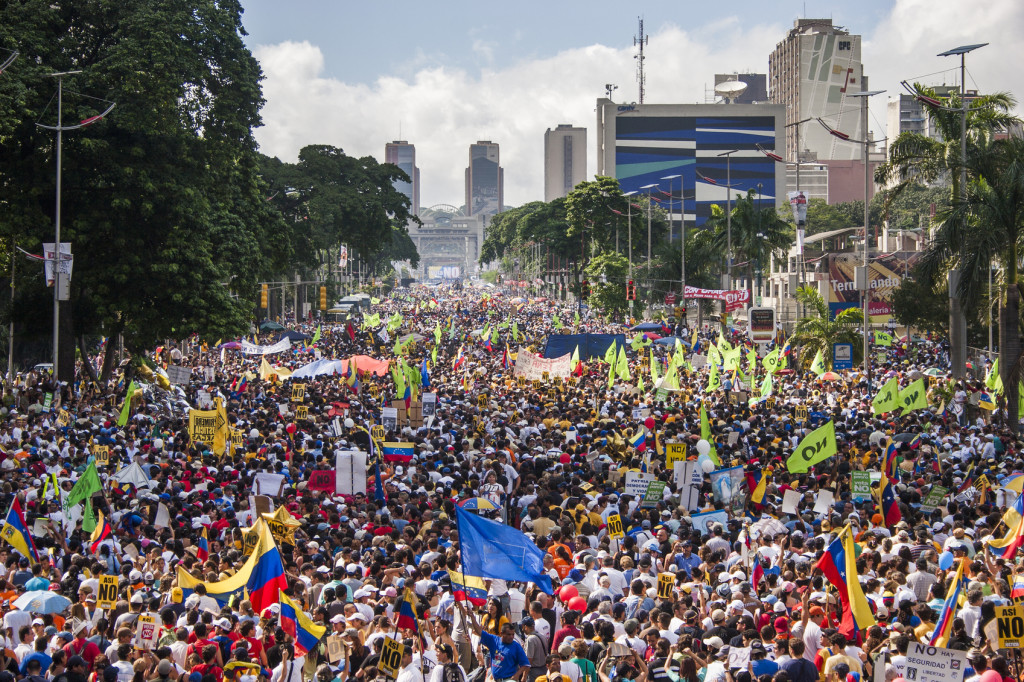
In 2007, demonstrators marched against constitutional amendments made by president Hugo Chavez, including the...

Whether you've been reading the news daily or have been relatively out of the loop, it's essential to know the current state of affairs in Venezuela before drawing conclusions. So, we'll provide some information here, to get everyone up to speed.
In a nutshell, the situation is dire.
All major economic indicators show that Venezuela is collapsing at an alarming rate. Gross domestic product (GDP) is down, unemployment is up, inflation is rising at an astronomical rate, and it's estimated that a whopping 80 percent of Venezuelans are living below the poverty line.
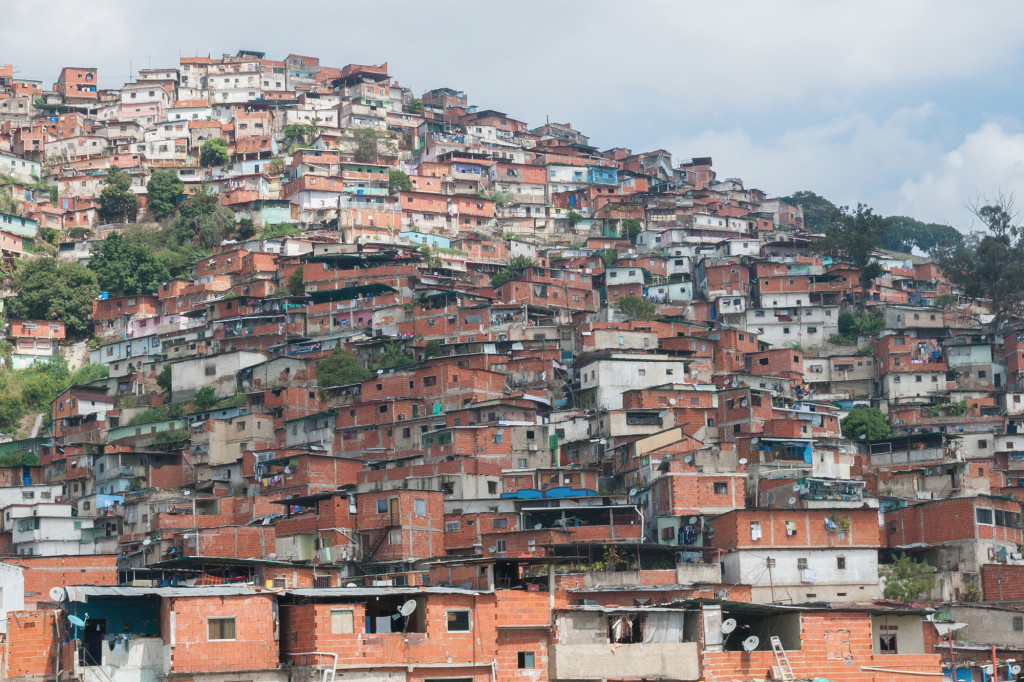
Crime is rampant in Venezuela, especially in low-income districts such as the Petare slums to the east of Caracas....
The International Monetary Fund predicts that inflation will reach 720 percent by the end of 2016, up from 275 percent last year. If you're not familiar with macroeconomics, those numbers may not register for you, so think of it like this: according to the official exchange rate, a dozen eggs costs the equivalent of 150 U.S. dollars.
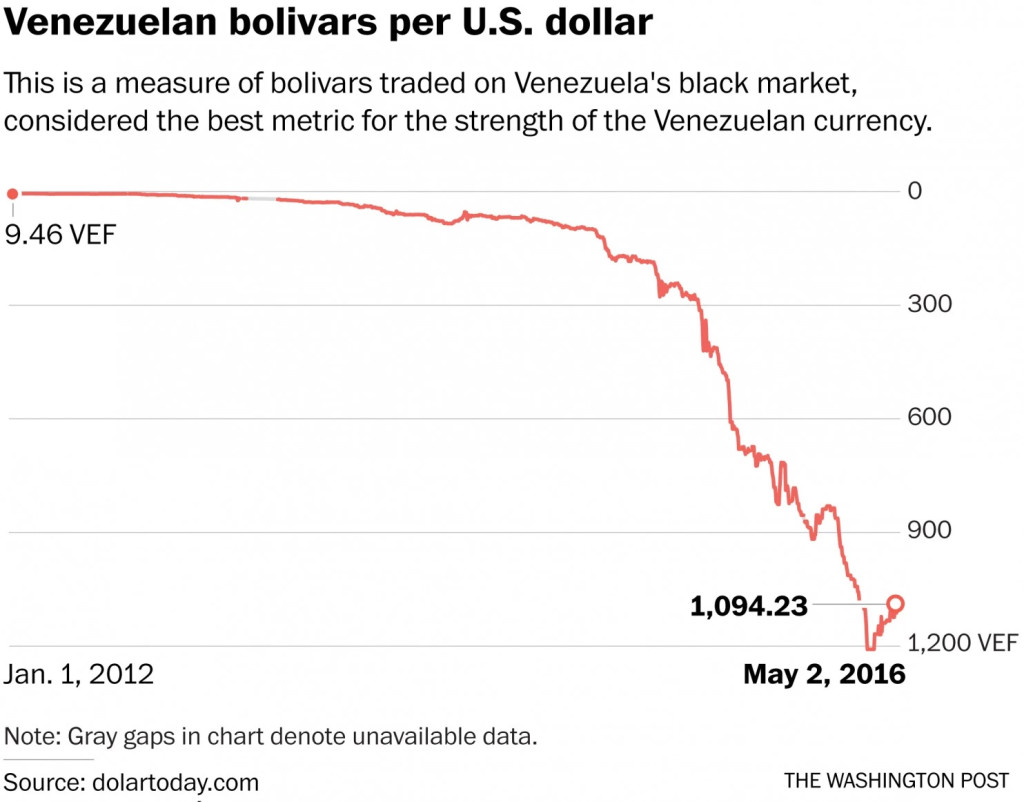
A graph of the number of Venezuelan bolivars (currency) equal to one U.S. dollar. Source: The Washington Post
Given realistic buying power, those eggs might cost “only” $1.50—but that requires buying from a black market street vendor. Also, due to massive shortages, many food products are completely unavailable, regardless of how much customers might be willing to spend. Additionally, the salary of many Venezuelans comes out to less than $30 per month at these black market currency rates. When you're making less than $360 per year, spending $1.50 on 12 eggs could easily break your budget.
Meanwhile, government officials seem to be pretending there's no problem—Venezuela's Minister of the Economy, Luis Salas, famously stated that “inflation does not exist in real life”.
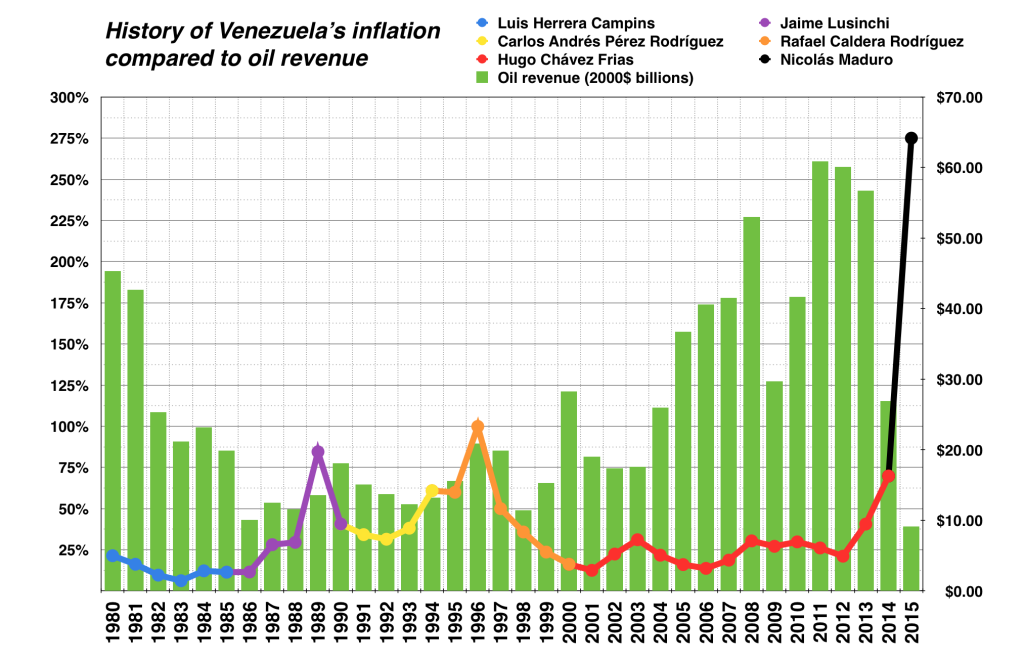
An illustration of Venezuela's oil income, currency inflation, and political regimes. Source: Wikipedia /...
Unsurprisingly, the worsening economic climate has led to a trend of mass emigration, known as the Bolivarian diaspora. This exodus began in the late 1990s, as a result of the Bolivarian Revolution that took place under former president Hugo Chavez, and it has continued to build momentum since then.
It's estimated that as many as 1.5 million Venezuelans have already emigrated to other countries in the last decade, and there's evidence that this rate is increasing dramatically. A 2014 poll taken by polling firm Datanalisis showed that approximately 10 percent of the Venezuelan population was making plans to leave the country permanently. One year later, another Datanalisis poll indicated that the figure had risen to over 30 percent.
Venezuela's murder rate is one of the world's worst—over 21 times that of the United States. The U.S. Department of State advises travelers that “violent crime in Venezuela is pervasive” and “kidnappings are a serious problem”. Heavily-armed gangs, drug cartels, and guerilla groups roam the streets, and these groups have often been revealed to be working directly with corrupt government officials, including current president Nicolas Maduro‘s own nephew and stepson.
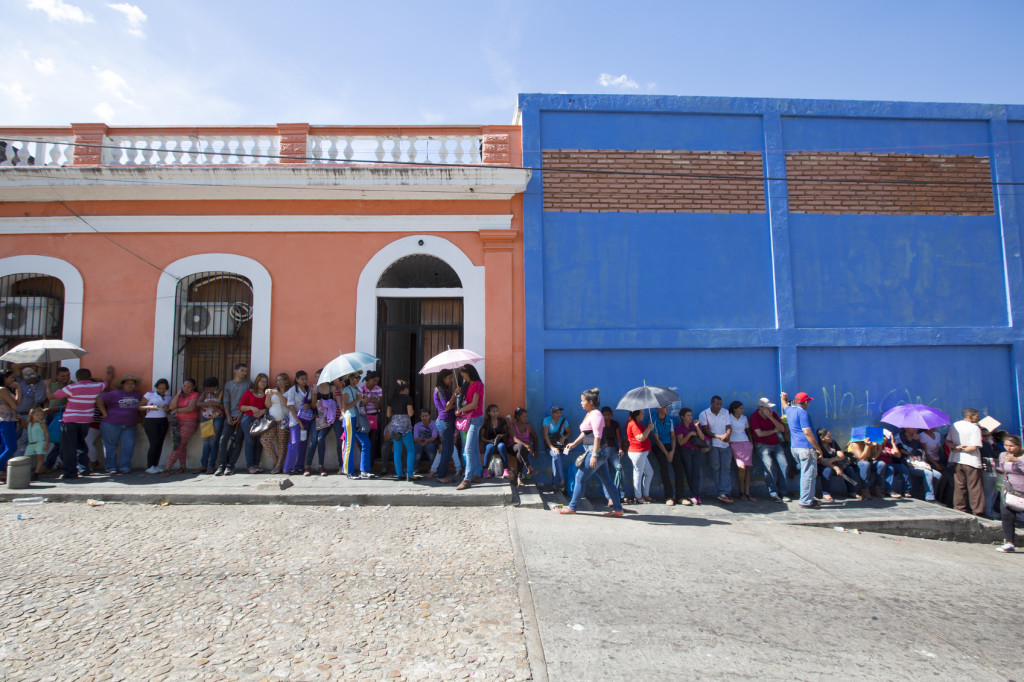
Long lines have formed outside many Venezuelan supermarkets, including this one in Ciudad Bolivar. Source: iStock /...
As with any situation of this scale and magnitude, there's no singular cause to lay the blame upon. However, there are a number of factors that may have contributed to Venezuela's collapse.
Washington Post reporter Matt O'Brien writes, “This is an entirely man-made catastrophe. Venezuela, by all rights, should be rich …it has more oil than the United States or Saudi Arabia or anyone else for that matter.” It's true that the Venezuelan soil is practically drenched in petroleum, and the country has proven oil reserves of 298 billion barrels, according to the U.S. Energy Information Administration.
Oil also accounts for nearly 95 percent of Venezuela's export earnings, making the country's financial stability almost wholly reliant on this single resource. In a 2013 article, National Geographic News correspondent Marianne Lavelle wrote, “Venezuela is deeply dependent upon a factor largely outside its control—the global price of oil.”
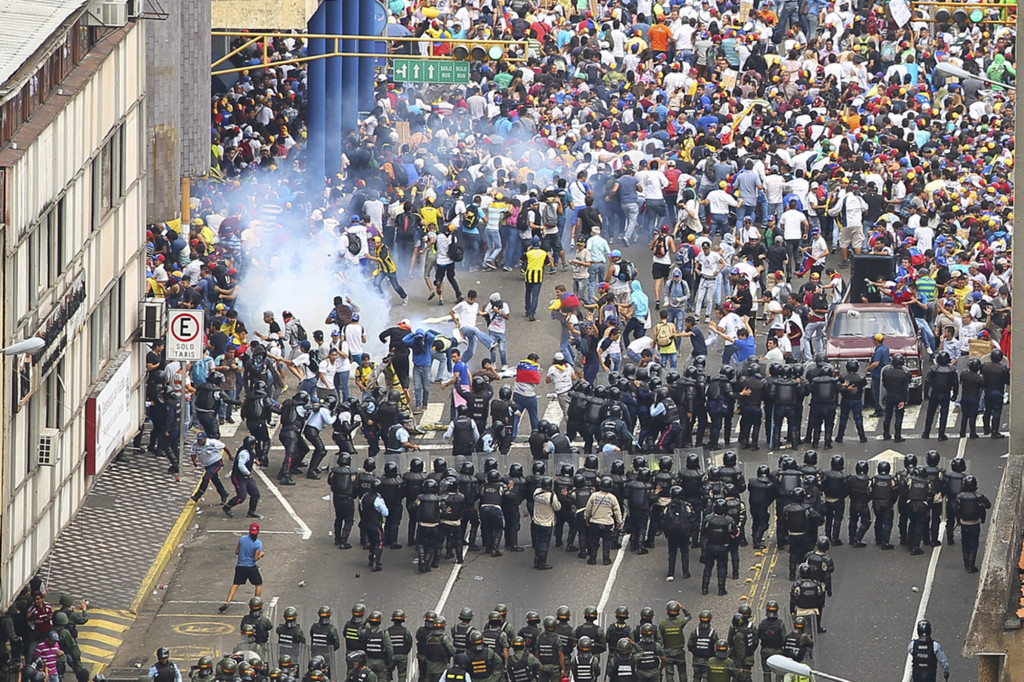
Riot police use tear gas to disperse students and protesters on the streets of San Cristobal. Source: iStock /...
Despite this large stream of income, the Venezuelan economy has been grossly mismanaged. Under his revolutionary socialist regime, President Chavez fully nationalized oil production in 2007, forcing out major corporations such as Exxon Mobil and simultaneously seizing their assets. Exxon Mobil then sued PdVSA, the state-run oil company, and was eventually repaid $250 million to cover the losses.
These actions served to further alienate Venezuela and its oil industry from the rest of the world. Once these foreign bridges had been burned, Venezuelan domestic oil production dropped by about 25 percent between 1999 and 2013, according to the New York Times. The decline of global oil prices in mid-2014 only compounded the problem, making the product that Venezuela was still exporting worth substantially less.
To cover all this up, the government blamed it on “capitalist parasites”, established price caps for various goods, and printed more money. This caused many businesses to be unable to turn a profit, as the government regulations forced them to sell products at below cost. Shelves soon emptied of goods, and customers formed long lines outside the few shops that remained open. Rather than assist with the lack of supply, the Venezuelan government chose to curb demand by forcefully turning away those waiting in line outside these businesses.
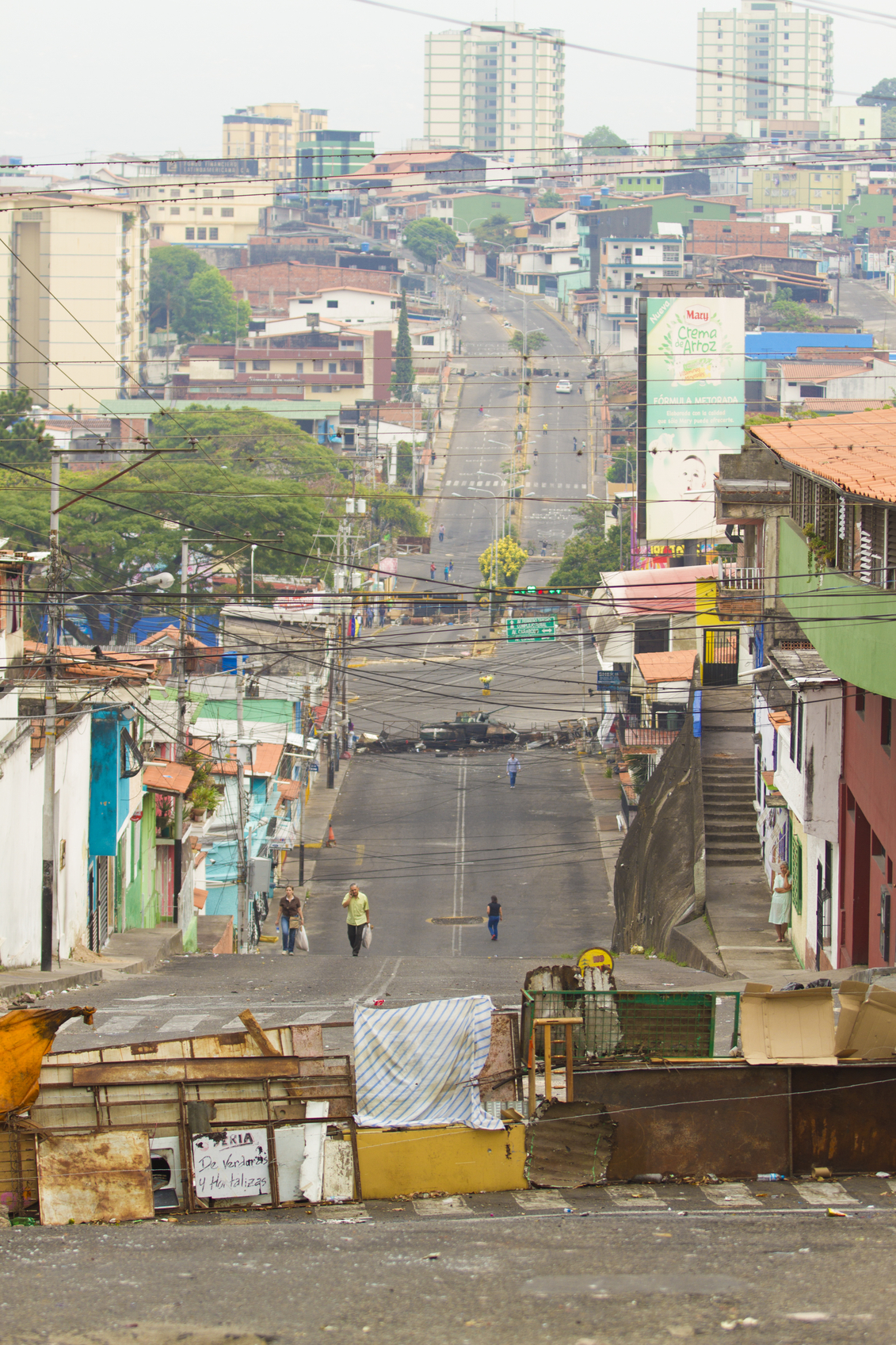
Citizens of San Cristobal barricaded the city's streets in March 2014, in protest against the government's...
Now, tensions have escalated to the point where Venezuelans are blocking roadways and attacking food trucks to avoid starvation. Soldiers often meet these crowds head-on with riot gear and tear gas canisters. Rather than deal with the food lines, wealthier citizens are attempting to circumvent the Venezuelan economy entirely by having groceries shipped to them by couriers in the United States.
Despite living in a country that has clearly reached the boiling point, Venezuelan foreign minister Delcy Rodriguez recently denied that the country is experiencing a humanitarian crisis.
For more insight into this situation, we reached out to Robert Young Pelton, author of The World’s Most Dangerous Places and founder of DPx Gear. Robert has decades of experience in war zones and other international hot spots, including Chechnya, Afghanistan, Liberia, and Iraq. So, he knows a thing or two about analyzing and surviving dangerous situations.
When we asked Pelton about what caused the crisis in Venezuela, he replied, “The same thing that has plagued all socialized oil-rich countries after a dramatic drop in petroleum prices—the use of centralized petro funds to subsidize the population’s needs. This creates an artificial environment. The Arab Spring and the collapse of the Soviet Union were also triggered by a sudden collapse in fictional economies.”
In order to evaluate the likelihood of total economic collapse in the USA, one must examine key economic indicators, much like we did for Venezuela.
As mentioned earlier, 95 percent of Venezuela's export earnings were related to oil production. For comparative purposes, here's a breakdown of the USA's 2015 export earnings by category, according to the U.S. Census Bureau:
This diversification is encouraging, since even if one industry fails catastrophically, the USA has other exports to rely on. Additionally, inflation has fluctuated substantially over the last decade, but currently stands at approximately 1 percent, according to the U.S. Bureau of Labor Statistics (BLS). GDP growth is up, unemployment is falling, and poverty rate has remained relatively stable since the 1960s at between 10 and 15 percent.
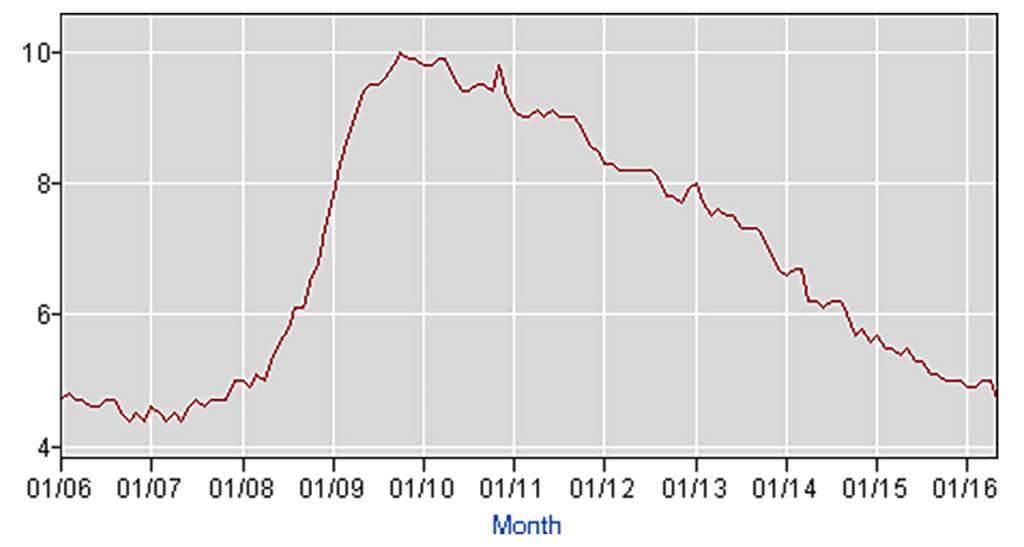
Unemployment rate in the United States for individuals 16 and older. Source: U.S. Bureau of Labor Statistics
Now, if you had asked these questions during the height of the recession in 2009, the economic metrics would have painted a much more grim picture. However, the evidence shows that the U.S. economy has recovered substantially from that point, and our economic outlook is much better than it once was. Most importantly, it's nowhere near that of Venezuela.
Robert Young Pelton agrees that a collapse of this magnitude is unlikely within the USA, due to our economy's “significant capability to print money, subsidize businesses and soften landings.” However, he also sees the impending threat of a short-term economic crisis. “A more likely scenario [in the USA] is 24- to 48-hour power outages in which Millennials (and a lot of us dependent on the JIT/electronic economy) realize that the “electronic economy” simply doesn’t function. No money comes out of ATMs, no gas comes out of fuel pumps, cell phones wind down, offices can’t function, grocery stores don’t get stocked and suddenly your grandparents' depression-era view of America seems pretty damn logical!”
Despite the relatively positive current economic outlook here in the USA, there's an important lesson to be learned: things can change quickly.
Venezuela's economy looked relatively healthy through the mid-2000s, and inflation rates didn't truly skyrocket until about four years ago. Many analysts would argue that a single presidential administration—that of Hugo Chavez—turned the tide and dealt a killing blow to the country's economy. When he died in office in 2013, his successor and former vice-president Nicolas Maduro inherited a country that was already collapsing.
Pelton writes, “When things like bread, cooking gas, and other staples vanish because the government can’t buy them, people suddenly panic. Keep in mind the salaries of the cops, mayors, and even soldiers are at risk, and it creates a very unstable environment. I have seen countries fall apart from South Sudan to Sierra Leone to Syria—the basic infrastructure collapses quickly, and mob rule begins.”
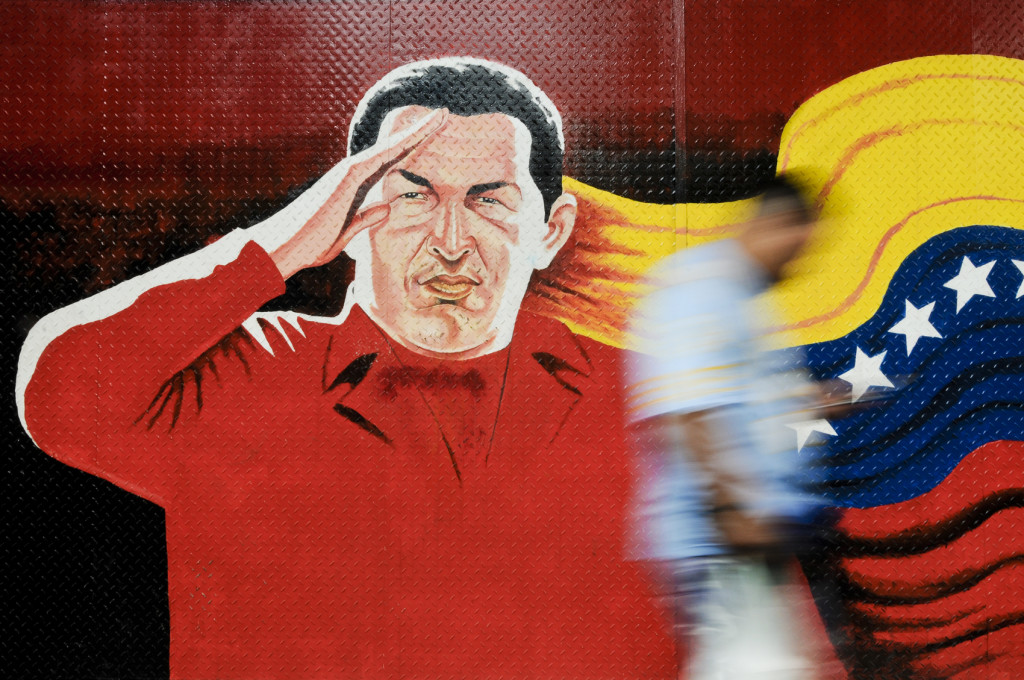
A giant mural of Hugo Chavez with the Venezuelan flag, located in central Caracas. Source: iStock / Thaddeus Robertson
The moral of the story is that we must prepare ourselves for the future by examining the present. It would be foolish to be caught unaware by a storm after ignoring the clouds, and even more foolish to be blindsided by economic collapse after failing to see the signs. So, study macroeconomics, learn the warning signs, and understand that it's possible for any economy spiral out of control rapidly.
“We have to be mindful of stable concepts,” Pelton writes. “[Healthy] countries have high home ownership, many small businesses, free flow of money, and low taxes. The basic boring things that keep regions stable naturally, not artificially.” If these forms of stability are declining, there may be trouble ahead.
As we've learned from Venezuela's example, peace and prosperity are fragile, so cherish them while they last.
 STAY SAFE: Download a Free copy of the OFFGRID Outbreak Issue
STAY SAFE: Download a Free copy of the OFFGRID Outbreak Issue
No Comments